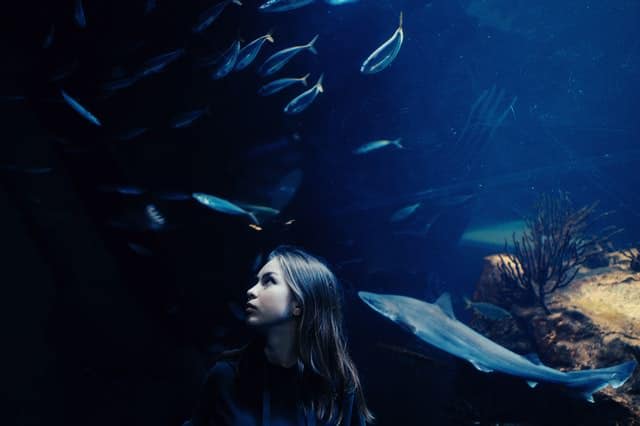Last updated on January 23rd, 2021
Composition is what changes a good photograph to great. And great compositions require balance — a small tree to bring a mountain into perspective, or a winding river to give your eyes something to follow.
Dead space and active space play an important part in composition, sometimes even without the photographer realizing it.
While both phrases refer to the space surrounding the subject of the image, emphasizing one type over the other can have a vastly different impact on the final result.
What is Dead Space in Photography?
Once you take away the subject, what remains around it space itself. This can be of 2 types — dead or active.
Dead space refers to an area from where the subject has moved on, so to speak; an area where the action has already ended or the subject has already performed its part.
For example, in an image of a bird flying from left to right, the dead space is the area on the left — behind the bird — since that space does not have any action contained in it.
In simple words, dead space is literally a part of the photo where nothing is happening.
What is Active Space in Photography?
Like the name implies, active space is a part of the photo where some activity will occur or is already occurring.
In our example of the bird, the active region is the area on the right because it shows where the bird will soon arrive.
Because the action will resolve on the right side, in front of the bird, the area is termed as ‘active.’
Focusing on the active area creates a sense of movement and speed, as the viewer starts to imagine what the subject will do and how the action will proceed in the photo.
How to Use Space in Composition
For Action Photography
The most obvious use of active space comes in action, wildlife, and sports photography.
Since this photography genre focuses on the subject’s action: kicking, running, flying, etc., it requires an emphasis on active space. After all, the viewer should take in not merely the subject, but even its action and the area where the movement is taking place.
For example, if you’re photographing a runner in a race, you must try to keep the runner to one side while leaving some active space in front of them to show the finishing line or the audience in the background.
The image will feel unbalanced if it looks like the subject will abruptly disappear off from the frame.

Similarly, if you are doing sports photography, emphasizing active space will help create a sense of anticipation and movement in your viewer’s mind. You will be able to show the atmosphere and energy of the scene in addition to the subject itself.
The principle of dead and active space should be used in conjunction with the rule of thirds. When you divide the image into three strips, framing the subject along the leftmost or rightmost strip will give you active space in the remaining two-thirds area.
Ultimately, the active space rule requires you to give the subject some space to ‘move around.’
For Portrait Photography
Portraits require a subtle balance between the face and the space around it too.
In portrait photography, the active space will be the area where the subject’s eyes are looking toward. If your subject is looking into the distance, try capturing that ‘distance’ by including more of the active area. This will give your subject some space to ‘look into’ and create balance.
For combining the effect of active space and the rule of thirds for the perfect composition, try to keep the face of your subject to one side, such that the eyes fall on one of the points of intersection of the rule of thirds gridlines.
Now, depending on the eyes’ direction, you can adjust your composition and highlight the active space. Let your viewer follow the subject’s eyes and ‘look into’ the space too.

Conclusion
Active space and dead space in photography are concepts that may not seem complicated but have an enormous impact on how the viewer perceives the image.
They simply refer to the area surrounding the subject, ‘active space’ being the space where any action or movement is about to occur.
By including as much active space as possible in front of the subject, the viewer will be able to follow the subject and imagine the motion.
Creating this balance between the subject and its environment will be easy if you give your subject some space to move about inside the composition.

